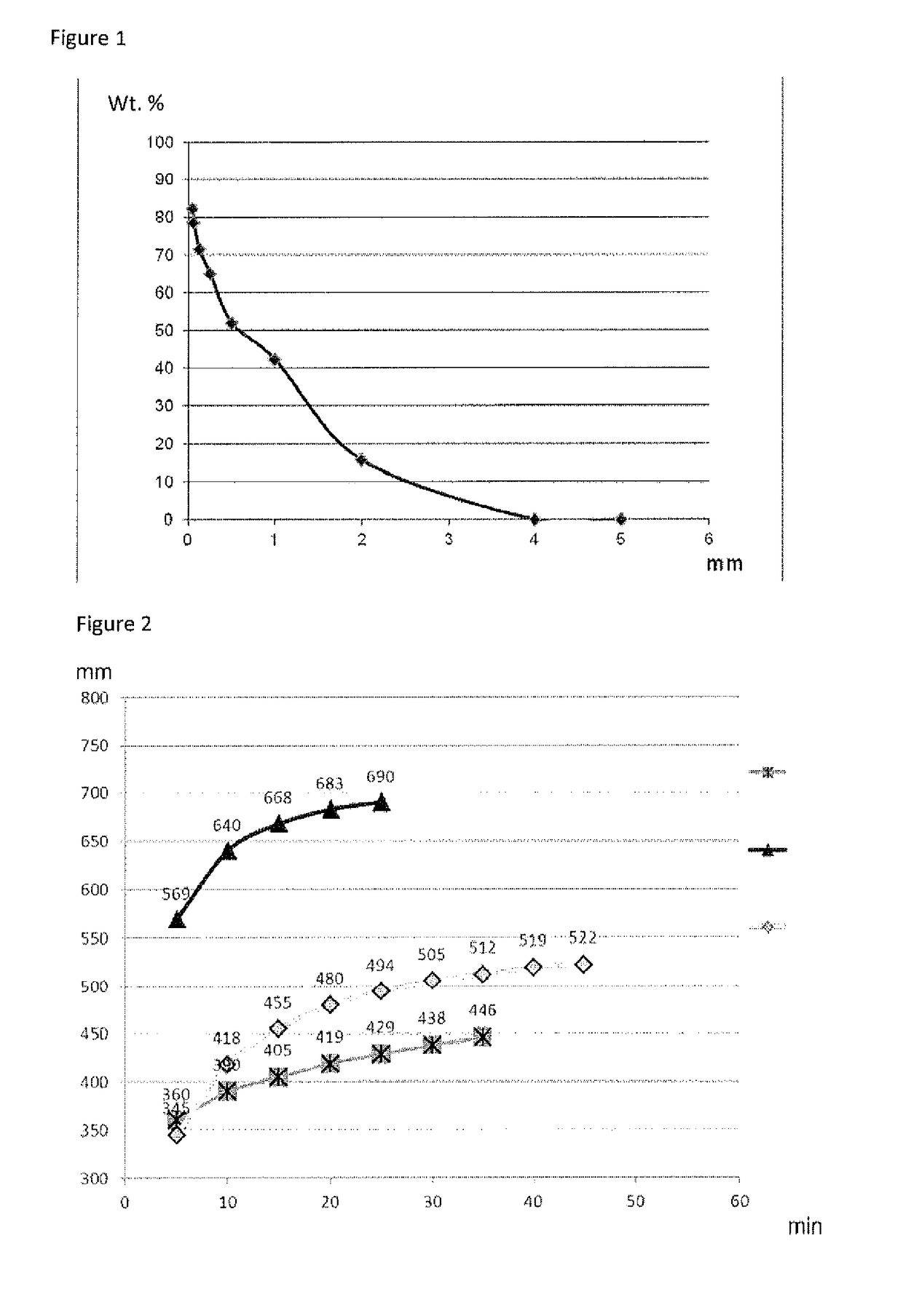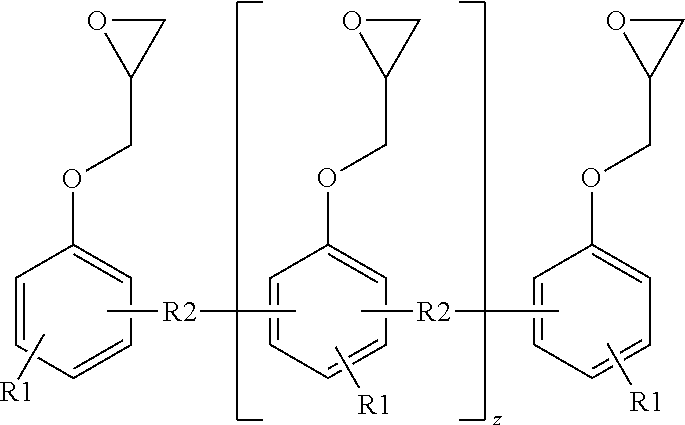Polycarboxylate ethers used as dispersing agents for epoxy resins
a polycarboxylate ether and epoxy resin technology, applied in the field of polycarboxylate ethers used as dispersing agents for epoxy resins, can solve the problems of limited epoxy resin filler uptake capacity, inability to easily incorporate large amounts of fillers homogeneously into compositions, and inability to achieve uniform filler incorporation, etc., to achieve the effect of efficient and simple manner of compatibility
- Summary
- Abstract
- Description
- Claims
- Application Information
AI Technical Summary
Benefits of technology
Problems solved by technology
Method used
Image
Examples
example 1
Production of a Three-Component System
[0163]A three-component system was produced as the basis for an epoxy grout with a filler content of about 82 wt. %.
[0164]Component K1: Epoxy Resin
[0165]
Componentwt. %Bisphenol A-epichlorohydrin resins with74.7average molecular weight >700Mixture of silicone-free defoamer,0.3solvent naphtha and 2-methoxy-l-methylethylacetate1,6-Hexanediol diglycidyl ether25Total100
[0166]The epoxy resin was charged first. All other materials were added and homogenized for about 5 minutes.
[0167]Component K2: Curing Agent
[0168]
Componentwt. %Triethylenetetramine100
[0169]Component K3: Filler:
[0170]
Componentwt. %Quartz sand mixture79.5TiO2 white pigment0.45Cement, particle size 20Iron oxide black0.05Polycarboxylate ether solution (20% PCE1dissolved in 80% benzyl alcohol)Total101
[0171]Component K3 is composed of a mixture of different quartz sands with particle sizes in the range of 0.06 mm to 3.2 mm. The particle size distribution of the quartz sand mixture is shown i...
example 2
Production of Curable Epoxy Resin Compositions E1 and V1
[0173]An epoxy composition E1 according to the invention was prepared by mixing components K1 to 3. The mixing ratio of component K1:K2:K3 was 6:1:35 parts by weight.
[0174]For comparison, an epoxy composition V1 was produced whose component K3 did not contain any polycarboxylate ether / benzyl alcohol mixture and which, otherwise, was identical to the composition E1.
example 3
Determination of the Flowability of Epoxy Resin Compositions E1 and V1
[0175]The flowability of epoxy compositions E1 and V1 was determined using a brass cone (about 500 g epoxy resin mortar) in accordance with DIN EN 13395-1 or EN 1015-3 and the flow spread (diameter) was determined after curing. The flow spread without polycarboxylate ether / benzyl alcohol mixture was 265 mm. With a proportion of about 0.85% polycarboxylate ether / benzyl alcohol mixture the flow spread was 310 mm, which is an improvement of about 17%.
PUM
| Property | Measurement | Unit |
|---|---|---|
| temperature | aaaaa | aaaaa |
| boiling point | aaaaa | aaaaa |
| boiling point | aaaaa | aaaaa |
Abstract
Description
Claims
Application Information
 Login to View More
Login to View More - R&D
- Intellectual Property
- Life Sciences
- Materials
- Tech Scout
- Unparalleled Data Quality
- Higher Quality Content
- 60% Fewer Hallucinations
Browse by: Latest US Patents, China's latest patents, Technical Efficacy Thesaurus, Application Domain, Technology Topic, Popular Technical Reports.
© 2025 PatSnap. All rights reserved.Legal|Privacy policy|Modern Slavery Act Transparency Statement|Sitemap|About US| Contact US: help@patsnap.com



